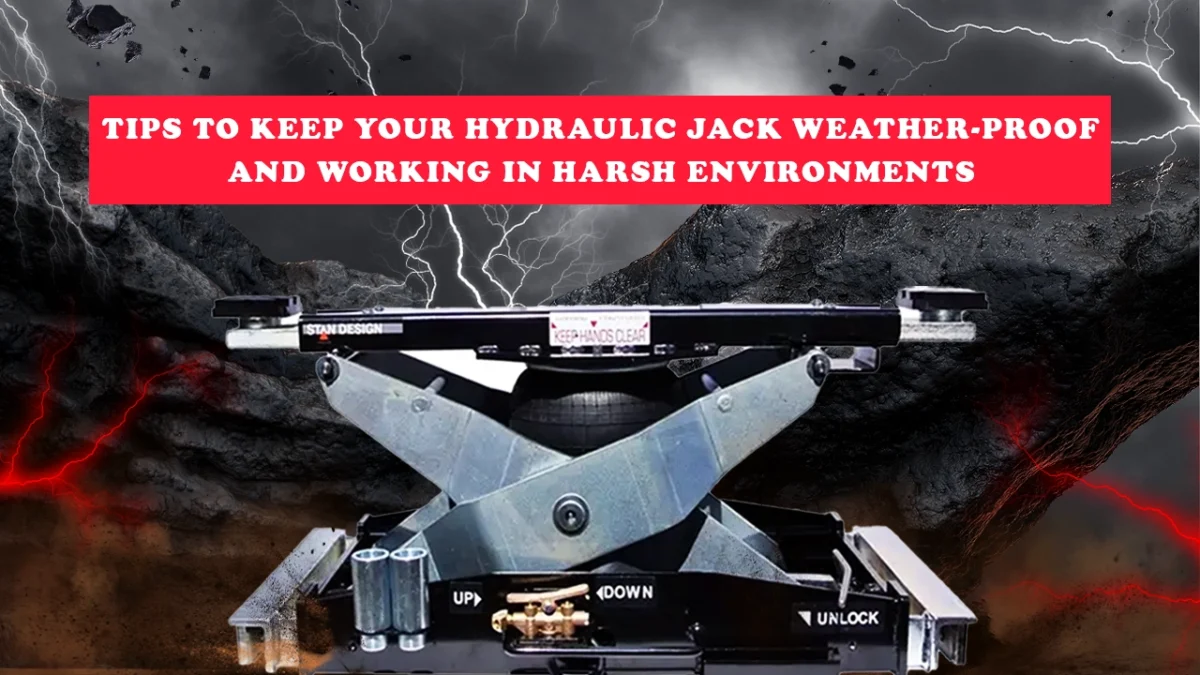You’re in the garage on a blazing summer afternoon and your hydraulic jack just isn’t cooperating or it’s a frosty winter morning, and the jack feels like it’s stuck. Sounds familiar? That’s what extreme weather does to your equipment like vehicle jack.
Hydraulic jacks are tough tools, but even they have limits when the weather turns. Heat, cold, humidity, and dust can all mess with performance, especially if you’re not doing the right maintenance. Whether you’re a weekend DIYer or a full-time mechanic, keeping your jack weather-ready saves you time, money, and a lot of frustration.
These challenges show why weather-proofing your hydraulic jack is crucial for reliable performance in extreme conditions like heat, cold, humidity, or dust.
This blog breaks down what extreme conditions do to your jack and how to keep it running smoothly all year. Let’s get into it.
What is a Hydraulic System of Operation?
You must have seen a syringe at work. When you push the plunger at the wide bottom of the syringe inside, the liquid it holds forces itself to escape through the narrow top opening. Hydraulics runs this process in reverse to produce lower speed but more force.
Hydraulic jacks work following the law of fluid mechanics. Put simply, getting compressed liquids to move to generate power is what hydraulics really are all about.
When incompressible liquids within a body- in this case, say the hydraulic fluid within the hydraulic system- is worked on by a certain amount of force or pressure from one end, it gets moved along the direction of said force to cause movement.
This movement is used to lift heavy loads and forces like commercial trucks, military trucks, sports utility vehicles, or other types of vehicles, among other heavyweight items using hydraulic jacks. From syringes to car brakes, water pistols to heavy-duty truck jacks, hydraulics are a common application in a variety of tools and industries.
A hydraulic jack consists of several key components, here are what makes it all happen:
- Reservoir: Stores the hydraulic fluid.
- Pump: Moves fluid from the reservoir to the cylinder.
- Cylinder: Houses a piston that rises when fluid is pumped in, lifting the load.
- Valves: Control fluid flow, allowing the jack to lift or lower.
Weather Impacts on Hydraulic Jacks
Heat (Summer)
Hot days thin out hydraulic fluid. That means lower pressure and weaker lifting power. On top of that, metal parts can expand, seals wear out faster, and you might even notice small leaks. See the guidelines on equipment maintenance.
Cold (Winter)
Cold weather thickens the fluid, making it hard to pump. You’ll feel more resistance, slower operation, and sometimes no movement at all. Rubber seals can go brittle and crack, and any trapped moisture might freeze or blocking valves or damaging parts.
Humidity
Humidity means moisture, and moisture leads to rust. It also sneaks into the reservoir and contaminates the fluid, which gradually reduces the performance of your vehicle’s jack over the time.
Dust and Debris
If dust gets inside the system, it can clog valves and scratch up internal components. Not to mention, dirty fluid wears everything down faster.
Understanding these impacts is the first step to protecting your jack.
Maintenance Tips for All-Weather Jack Health
To keep your hydraulic jack reliable in any weather, these maintenance tips will help you to remain on right track. Think of it like taking care of your Truck. Regular inspection prevents breakdowns and extends the life of jack.
General Maintenance
- Check it regularly: Look for cracks, leaks, worn seals, or damaged hoses.
- Keep it clean: Wipe the jack with a soft cloth after use to remove dirt or grease. As these shorten its life.
- Use proper lube: Apply manufacturer-recommended lubricants to moving parts to reduce friction suggested by Occupational Safety and Health Administration.
Hot Weather Care
- Use the right fluid: ISO VG 46 or 68 are thicker and hold up better in the heat
- Keep it cool: Store in shade or a ventilated area — heat shortens component life
- Check fluid often: Hot temps can cause evaporation, so top up if needed.
Cold Weather Care
- Winter-grade fluids: AW 68 or similar high VI fluids work better in freezing temperature.
- Warm it up: Run the jack unloaded for a minute or two to get fluid circulating.
- Avoid freezing storage: A heated or frost-free space is ideal.
Humidity & Moisture Protection
- Prevent Rust: Apply anti-corrosion spray to exposed metal parts.
- Reduce Moisture: Store with desiccants or in a dehumidified area if possible.
Keeping Protection
- Seal check: Make sure seals are tight and not cracked.
- Cover it up: Use a breathable tarp to keep dust out when it’s not in use.

